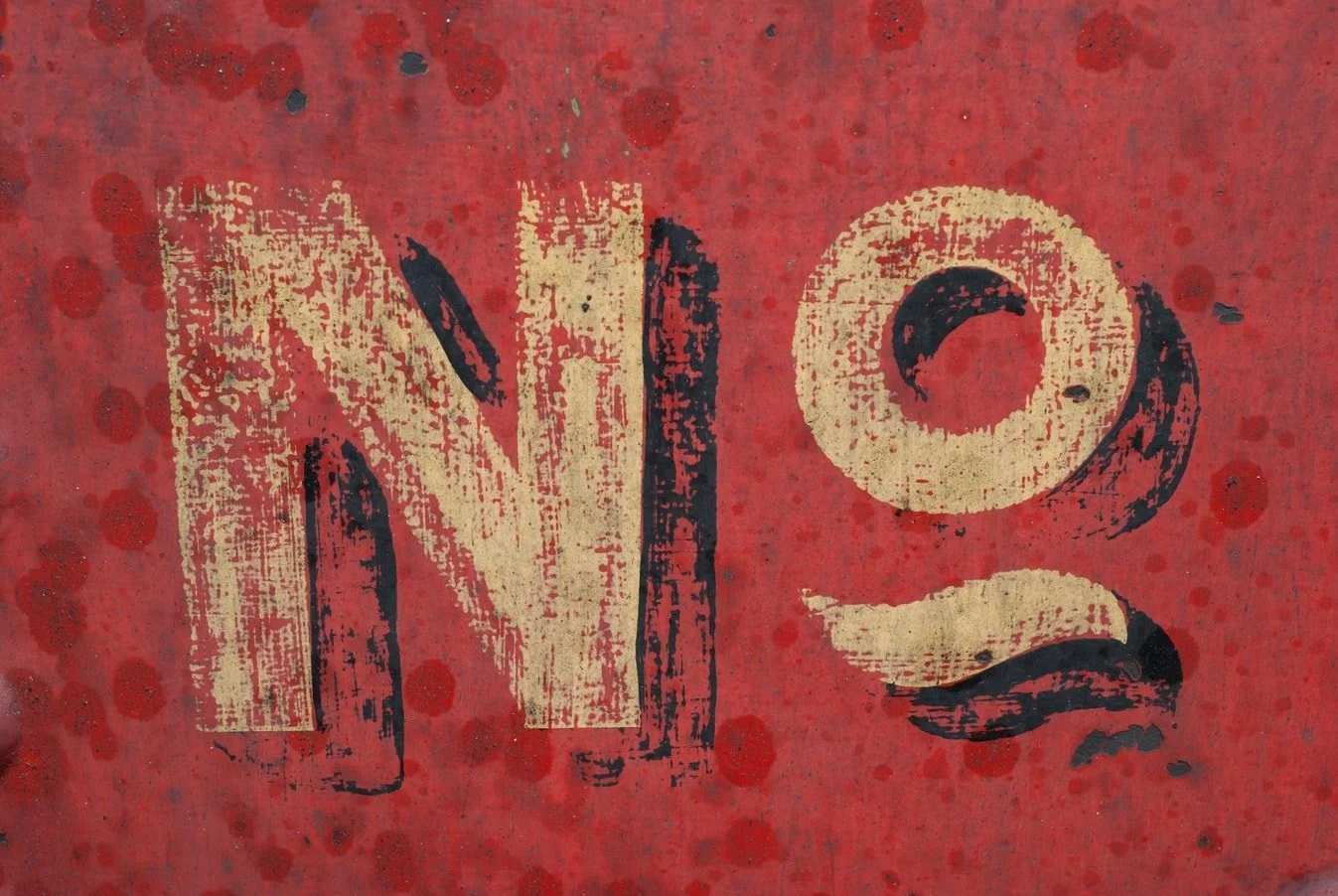How to screen potential clients—the super simple way!
Do you love your work but your clients, well, not so much? I hear this story from my consulting clients all the time! It's not that the clients are bad people, but they likely were never the right fit for you—and that's okay!
The following is our three-phased, ten part, super simple guide to screening clients so you know you are a perfect fit for each other!
Yes, this is exactly our process here at SM&Co, and I'm yet to see a 1:1 business type that can't adapt this framework to help them better match with perfect fit clients.
Phase 1: Before the Inquiry
You can do a lot of the heavy lifting prior to someone ever reaching out to you! This is achieved by communicating process, asking the right screening questions, and having a dialed in, cohesive brand.
Step 1: To better screen potential clients, make sure you have internal brand alignment.
Have you taken a hard look at whether your public persona (your website, social media and newsletter) align with the experience people have working with you? Most people don't check in on this very often—and in fact, they often get so distracted by wanting to emulate someone in their industry or that they admire, they lose their own unique point of view in the process. Audit the major public facing pieces of your brand and make sure they align and communicate the true, authentic reality of working with you.
Tip: Interview a client and ask them about any disconnect between their expectations and experience working with you.
Give your website and social media a second look—does your brand align top to bottom?
Step 2: Create an intake form that gives you the information about potential clients that you need.
I cannot express the importance of a quality lead form that gives you the information you need enough. It's mission critical. And yet, most people treat it as an afterthought at best.
And, that also means that you may need different lead forms for different services. We used to have several forms for different types of services (which you should consider if you offer a more menu style of solutions), but now we've consolidated everything into our Alignthority™ Accelerator, so our inquiries all funnel into our one main inquiry page. Neither solution is right or wrong—pick the approach that is most aligned with your business model.
To reduce our team's stress, I manage this all through Dubsado (use the code SARAHMOON for a discount if you try Dubsado yourself), and monitor our sales pipeline with AirTable, rather than native forms that are part of my website.
If your audience is business to business (B2B), you may need to ask how large a business is, the person's role in the company, what their budget is, etc. If you're a business to consumer (B2C) business, you'll want to ask questions about their goals, for example. It's a fine line between getting the right info and scaring people off, but it's crucial to figure that if people can't be bothered to provide complete information, it's better that they don't inquire, as it's likely they're just not ready yet—and that's fine!
Step 3: Communicate your process to potential clients.
Before a prospect reaches out, do your very best to help people understand what it's like to work with you. Folks come to consultants, therapists, designers, and other professional services providers with a set of expectations and you're not doing either of you any good to hide what it's like to work with you!
Be super clear on this and you'll weed out people who aren't a good fit. For example, I make it as transparent as I can that we work with business owners and CEOs, so if you're part of an organization that needs board approval on everything, then we may not be the best fit if you cannot delegate a decision maker.
Are you crystal clear on your workflow? Then tell people how you work so they will know if you're a good fit!
We're also careful to communication that we work collaboratively with clients, bill at a flat rate and aren't available for subcontracting for agencies. This will, again, help you screen clients without your actively doing a thing!
Phase 2: Let potential clients get to know you!
Once someone has reached out and you feel that they may be a good potential client, it's time for you to get to know each other. This should tell both parties if it's a match—remember, this isn't about selling, it's about ensuring every client story is a success story for you both!
Step 4: Make sure your discovery calls with potential clients are as much about fit as output.
Too many people focus discovery calls on the work output. For designers, it's often "do you like sliders on the homepage" or "what is your style"? This noise can wait! What you need to focus on are questions such as,
"What will our work together allow you to do?"
"How will our work together solve a problem?"
"How will this work make your life easier?"
"What does success look like to you?"
"What obstacles are standing in the way of making progress?"
Tip: A lot of the times this will be the first time your potential client has been asked these types of questions, so don't worry if they can't answer right away.
When this is the case, I will give them some insights into what I see as opportunities (the efficiencies websites can create, for example, often completely blows people's minds—it never occurred to them that a website can act like an administrative assistant) and help them answer these questions. Then, I'll encourage them to discuss this all with their team, if they have one. People come back to me even more excited!
Not only does changing the framework for your conversation with potential clients establish your authority and expertise, it makes the sales process far easier! It's like magic—promise!
Step 5: Ask your potential client if they've worked with a consultant in this role before and how that went.
Sometimes people have a history of working with folks who do what you do and it's important to know how they've collaborated with them in the past.
Shifting the conversation to the outcome your work will create magic.
Some things to look out for:
Do they trash the person whom they worked with? Sure, sometimes people are a terrible fit, but the right reaction to that is not to disparage them, it's to graciously move on.
Are they expecting more of an on-demand employee role? This can be problematic both for your management (as you likely have multiple clients) and legally—in the US there are very clear rules regarding what makes an employee and you don't want to run afoul of that.
Do they have process in mind that doesn't gel with your process?
What did they like or not like about the past consultant's work style? If you are a high tech person and the lead loved that their past consultant conducted in-person meetings, that's something to be aware of.
Tip: If they've never worked with a consultant before, that's another thing to address. This is where being transparent with each other is crucial.
Step 6: Get crystal clear about your potential clients expectations in working with you—and if you fit into them.
Here's a hard truth: One of the big reasons projects fail is because of expectations that don't sync up.
"Have you ever worked with someone in this role before?" This simple question holds loads of power.
You can have perfect contracts and a clearly-defined scope of work, but the expectations in people's minds will persist. This is why I advocate for reiterating your process in several ways, asking if they have concerns, clearly stating how you communicate (for example, we are a remote team so we use email, Google Docs and Zoom), and being transparent in terms of sticking points such as payment schedules.
Be prepared to graciously decline a project if your lead is very uncomfortable with how you work. In fact, consider writing a script now, so that you're prepared for this inevitability. It will empower you to graciously, and kindly decline.
You will both be unhappy and it's a true kindness if you take the hit and bow out before you've entered into a working relationship. I do this regularly and I truly believe it earns me respect and good will! And I hear this story from other seasoned pros as well. In fact, I've even received referrals from prospects whose projects I've declined! Wild, right?
Phase 3: Do your homework when considering potential clients.
Expectations of timeframes and your availability may be a sticking point for potential clients—be transparent as possible!
As important as open dialog is, you have to do your homework on your own. Fortunately, this internet makes this dead simple!
Step 7: Research the potential client's reviews on Glassdoor.
Glassdoor is a service where employees and potential employees can review companies. You can check out what employees' experiences were, how interviewees are treated and even salary info. There are certain words and themes that you should keep an eye out for, including:
bullying
non-payment
overworked
harassment
On the other hand, be hopeful if you see phrases such as:
valued
supportive
generous
While Glassdoor won't give you the full picture, you will definitely see themes. I will tell you, I learned this lesson the hard way, the client I worked with who bullied me and my team, used foul language, and insulted their own teams had numerous reports of bullying on their Glassdoor page—now I always look first!
Step 8: Check out what customers have to say about your potential clients.
Are your prospect's online reviews full of red flags?
Does your client have reviews on Yelp, Google or Facebook? Check them out! Keep in mind, there will be negative reviews, but it's all about how they're responded to.
Tip: "Listen" to the tone and see if there are chronic problems or simply growing pains. You can tell the difference—trust me.
One of my favorite clients has some not-awesome reviews but they're responded to so kindly with actionable steps they took to remedy the situation. On the other hand, if someone responds to Yelp reviewers rudely, and also has many reviewers touch on their lateness and missed service appointments, that's a big red flag!
Phase 4: Communicate clearly to your potential clients.
I'm obsessed with clear communication and that's because the majority of problems I've had in my decade-plus in doing this work comes down to communication confusion. Sometimes it's on me, sometimes the client, so now I obsess over making sure that everyone understands their roles and the steps they need to take to succeed.
Step 9: After you present a proposal, quote, or booking link to your potential client, have a follow up call to ensure you're on the same page.
Before you proceed with a large project, have one final conversation.
If you're embarking on a major project, I urge you to have a follow up call with your lead before contracts are signed and money is exchanged to make sure you're all coming to the table with the same understanding. This is crucial. While we don't do this often with our services these days (because all the information is right there), it's still something I offer if anyone seems as if they feel uncertain or conflicted. It's just that important!
Go through the process one more time, provide a written fee schedule and be sure the client understands it. (Pro tip: Don't bill hourly, this creates friction!) Ask the potential client explicitly, "Before we move forward, do you have any concerns or does anything need more explanation from us?"
And even more importantly, if anything in your research brought up a concern in your mind, ask about it. It's very easy to say, "I was researching your company and I saw some online reviews that gave me pause—I'd love to chat with you about whether those issues have been resolved." If someone gets offended, that's a good final red flag, if they are eager to explain how they fixed it, that tells you a whole lot too.
Step 10: Learn how to say "no" to potential clients with kindness.
I can still remember the first time I said, "I don't think I'm a great fit for your project."
I was nauseated all day beforehand. I thought that by saying no, I'd be dooming myself to never signing another client (pro tip: that's not at all how the world works). And then I said it, and... it was totally fine!
Depending on the project, I strongly urge you to do some research and have a list of options for the lead. (But give your referrals a heads-up first, please!) I actually often refer folks to DIY solutions because I am concerned that they are having more money anxiety around the investment than I'm comfortable with, and they are often appreciative because that option never occurred to them. Really, it's one hundred percent okay to say, "Hey, I don't think this is a solid fit, but here are some resources to take a look at." Or, if you've decided that the prospect has too many red flags to refer out without harming your reputation, simply say, "We're not able to take on your project, but wish you the best." This is also fine. Be gracious and professional.
Then go back to step one in this how-to guide and figure out where that misalignment occurred so you don't get this far in the game with a poor fit.
No is a powerful word—use it more.
See? It's not that hard! Screening your potential clients is stressful, but the more clear you are on your own process, the more your brand is aligned, and the more you just plain talk to people, the easier it gets to make sure you're working with the ideal clients, not folks who kinda, sorta fit.













Sarah Moon Consulting has a brand new look! Take a look behind the scenes of my rebrand and borrow some lessons from my own branding journey.